Are you curious about how manufacturers produce high-precision metal components at low cost, or how complex parts like engine blocks, gears, and valves are made efficiently? The answer often lies in Green Sand Casting, one of the oldest and most reliable methods of metal casting. But what exactly is Green Sand Casting, and why is it so widely used in industries ranging from automotive to aerospace? In this comprehensive guide, we will walk you through the ins and outs of Green Sand Casting, explaining its process, advantages, and why it continues to be a cornerstone of modern manufacturing.
Green Sand Casting is a versatile and cost-effective process that uses a mixture of sand, clay, and water to create molds for molten metal. The term “green” refers to the moisture content in the sand, which helps it retain its shape before the molten metal is poured into the mold. This traditional casting technique has stood the test of time, evolving over centuries to become a preferred choice for manufacturing durable and intricate metal parts. Whether you are creating aluminum green sand castings, iron castings, or other green sand metal castings, this method offers unmatched flexibility, cost-efficiency, and the ability to produce complex shapes.
In this guide, we will explore the step-by-step process of green sand mold casting, discussing the materials used (such as green casting sand), the stages of mold-making, pouring, and finishing, as well as the equipment and techniques involved. Whether you are a seasoned professional or new to the world of casting, this article will provide a clear, detailed overview, and help you understand why green sand casting remains an essential method in the foundry industry today. So, let’s dive in and explore the fascinating world of green sand casting together!
Origin of Green Sand Casting
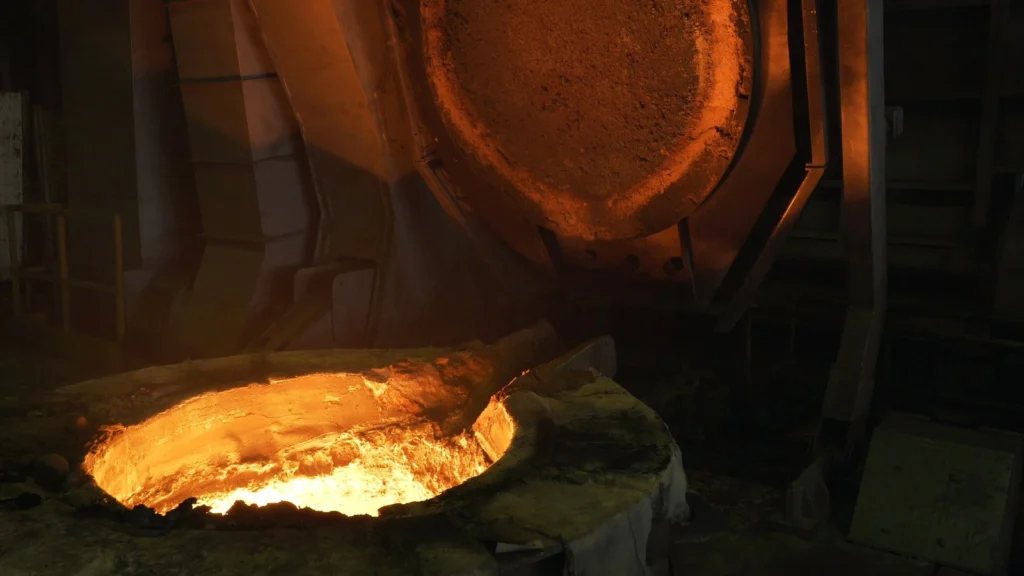
The origins of Green Sand Casting can be traced back to ancient civilizations, where early metalworkers first discovered the potential of using sand molds to shape molten metal. The practice of casting metals, particularly in the form of weapons, tools, and decorative objects, dates as far back as 4000 BC in cultures like the Egyptians and Mesopotamians. These early methods involved using natural sands that were compacted around patterns made from wood or clay, much like today’s green sand mold casting techniques.
Over time, the process evolved as different cultures refined their methods. The introduction of clay-based sand mixtures, a key feature of green sand casting, was a significant innovation that helped improve the mold’s strength and heat resistance. By the 19th century, industrial advances in metal casting led to the development of more standardized green sand casting techniques, especially in foundries producing large quantities of metal components for industries like railroads, automotive, and machinery.
Today, green sand casting remains a cornerstone of metalworking and has become a vital process for producing high-quality, complex metal parts in industries worldwide. The historical development of this casting method laid the foundation for modern manufacturing, and its continued use highlights both its efficiency and adaptability.
While the term green sand casting might sound simple, its true value lies in the intricate balance of materials and processes that make it one of the most versatile and cost-effective methods in the foundry industry. This process uses molds made from a blend of sand, clay, and water, with the term “green” referring to the moisture content in the sand. The combination of these materials allows the molds to retain their shape under high pressure, making them ideal for casting both intricate and large metal components.

Get Your Free Catalog Now!
Composition of Green Sand Casting
The effectiveness of Green Sand Casting largely depends on the precise composition of the green sand used to form the mold. This composition is carefully formulated to balance strength, permeability, and workability, ensuring that the mold can withstand the pouring of molten metal while retaining its shape. Below is a breakdown of the key components and their typical proportions in green sand molds:
| Component | Purpose | Typical Percentage |
|---|---|---|
| Silica Sand | Forms the primary bulk of the mold, providing strength and heat resistance. | 75% – 85% |
| Bentonite Clay | Acts as a binder to hold the sand particles together, giving the mold its cohesive strength. | 5% – 11% |
| Water | Activates the clay binder, making the sand moldable and able to retain its shape under pressure. | 3% – 5% |
| Additives | Enhances specific properties, such as reducing expansion or improving surface finish. Examples include coal dust, cellulose, and silica flour. | 1% – 3% |
The primary ingredient, silica sand, is chosen for its ability to endure the high temperatures of molten metal while maintaining the integrity of the mold. Bentonite clay, a natural mineral, provides the required cohesion by binding the sand particles together. The addition of water activates the clay, giving the sand its “green” quality—moisture that allows for easy shaping and compacting during mold preparation.
Additives such as coal dust are often included to improve specific characteristics of the mold. For instance, coal dust can help create a reducing atmosphere during pouring, which minimizes metal oxidation and improves the casting’s surface finish.
This precise balance of materials ensures that green sand molds perform consistently during the casting process. Deviating from these optimal proportions can lead to common defects such as mold cracking, poor surface finishes, or gas-related porosity in the cast part. This is why stringent quality control is maintained in the preparation of green sand molds across foundries.
By understanding the composition and purpose of each component, manufacturers can tailor green sand formulations to meet the specific requirements of different casting projects, from aluminum green sand castings to more complex iron castings.
How Does Green Sand Casting Work?
Mold Development
- Pattern Creation: The process begins by creating a pattern of the desired component, often made of metal or another durable material.
- Mold Formation: The pattern is placed inside a flask and surrounded by a green sand mixture (a blend of silica sand, clay, and water).
- Compaction: The sand mixture is compacted around the pattern to form the mold, ensuring it holds its shape under pressure.
Shell Core Production
- Core Making: In this step, additional cores are created using sand to form hollow sections inside the final casting.
- Core Materials: The cores are made from sand mixtures similar to the mold but may include different additives to provide better strength or heat resistance.
- Core Positioning: Once the cores are ready, they are carefully placed inside the mold cavity to shape internal features such as cooling channels or internal passages.
Assembly of Shell Mold and Core
- Mold Halves: The mold is separated into two halves. The core is positioned within one half of the mold.
- Core Alignment: The two halves of the mold are carefully assembled with the core in place, ensuring that all components align properly for accurate casting.
- Final Mold Assembly: The two mold halves are securely clamped together, ready for pouring molten metal into the cavity.
Pouring and Cooling
Solidification: After cooling, the mold is broken open to reveal the solidified casting, which is then cleaned and inspected for defects.
Molten Metal Pouring: Once the mold is assembled, molten metal is poured into the cavity of the mold, filling the space around the pattern and core.
Cooling Process: As the molten metal cools, it solidifies and takes the shape of the mold. Cooling time depends on the metal type and the size of the casting.
Why is Green Sand Used in Casting?
The moisture content in green sand is essential because it allows the mold to retain its shape and resist cracking under the intense heat of molten metal. Unlike dry sand casting, where the sand is hardened by a binding agent without moisture, green sand casting offers significant advantages:
- Flexibility: The moisture in green sand casting allows it to be easily shaped and compacted around patterns, creating intricate molds that capture the finest details.
- Recyclability: Green sand casting is highly sustainable, as green sand can be reused multiple times, making it a cost-effective and environmentally friendly option for foundries.
- High-Volume Production: The ease of use and the ability to produce molds quickly make green sand casting ideal for large-scale manufacturing, such as producing engine blocks, valves, and other metal components.
These key advantages make green sand casting the preferred choice for many industries due to its efficiency, adaptability, and minimal environmental impact.many industries due to its efficiency, adaptability, and minimal environmental impact.

Get Your Free Catalog Now!
How to Make Green Sand for Casting (Metal & Aluminum)?
Making green sand for casting involves mixing the right combination of silica sand, bentonite clay, water, and optional additives to create a durable and flexible mold. This mixture is designed to withstand the heat of molten metal, providing the strength needed for various types of casting, including metal casting and aluminum casting. The process for preparing green sand for both types of casting is very similar, with minor adjustments based on the specific requirements of the metal being used.
Step-by-Step Process to Make Green Sand for Casting
- Prepare the Sand Mixture
The first step is to blend silica sand with bentonite clay, ensuring that the clay is evenly distributed throughout the sand. The addition of water activates the clay, making the mixture moldable and ready for shaping. - Achieve the Right Consistency
After mixing, it’s important to test the consistency of the green sand. It should hold its shape when compacted but be easy to break apart when gently tapped. The ideal consistency ensures that the sand molds retain their shape during the casting process without being too hard or crumbly. - Add Optional Additives for Specific Needs
Depending on the casting requirements, additives like coal dust, cellulose, or silica flour can be introduced to improve specific characteristics. For instance, coal dust helps in reducing oxidation when casting metals like aluminum, while silica flour can increase the strength of the mold and improve the surface finish of the casting. - Mix Thoroughly
Once all the ingredients are combined, mix thoroughly to ensure uniformity. A mechanical mixer is ideal, though manual mixing can work as well. The goal is a homogeneous mixture that is well-blended without clumping or uneven areas. - Test and Recondition the Sand
After mixing, test the green sand for its ability to retain shape. Squeeze a handful of the mixture, and it should hold its shape but crumble slightly when tapped. If the mixture is too dry, add a bit more water or clay to achieve the desired consistency. If the sand is too wet, allow it to dry slightly or add more silica sand. - Store and Reuse
Green sand is reusable, and after each casting, it’s important to recondition the sand. Clean out any debris, and then add water and bentonite clay as needed to refresh the mixture before using it again.
Making green sand for metal casting or aluminum casting requires precision in achieving the right balance of ingredients and consistency. While the basic process remains the same, small adjustments—such as adding additives or altering moisture levels—can be made depending on the type of metal being cast. The flexibility of green sand allows for it to be used in a variety of casting applications, from aluminum green sand castings to more complex metal castings, making it a versatile and cost-effective choice in foundries around the world.
Applications of Green Sand Casting
Green Sand Casting is used in many industries due to its versatility. Some of the primary applications include:
Agriculture
Parts like gears, engine blocks, and other agricultural machinery components are produced through Green Sand Casting.
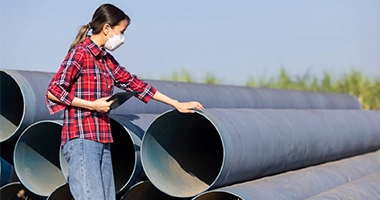
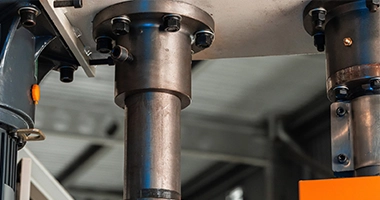
Automotive Industry
Green Sand Casting is used extensively to produce parts like engine blocks, cylinder heads, brake components, and more.
Valve Manufacturing
Green Sand Casting is ideal for manufacturing valve bodies, flanges, and other critical components used in industries such as oil and gas and water treatment.
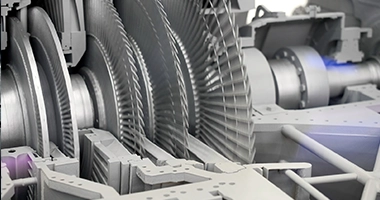

Construction
Green Sand Casting is employed in creating heavy machinery parts, structural components, and even decorative elements.
Petrochemical
Components like pump housings, compressor parts, and other machinery used in petrochemical plants are often cast using this method.

Green Sand Casting Advantages and Disadvantages
Green Sand Casting is one of the most widely used metal casting methods due to its cost-effectiveness, flexibility, and ease of use. However, like all manufacturing processes, it comes with both significant advantages and certain limitations. Understanding these pros and cons is essential for making the right decision when choosing green sand casting for your project. Here’s a breakdown of the key advantages and disadvantages of green sand casting:
Advantages of Green Sand Casting
- Cost-Effectiveness
Green sand casting is one of the most affordable metal casting processes. The materials used in the sand mixture—such as silica sand and bentonite clay—are relatively inexpensive, and the process doesn’t require costly molds or complex equipment. This makes it an excellent choice for low-cost, high-volume production, especially for industries that need to produce large quantities of metal parts like engine blocks and valves. - Versatility and Flexibility
One of the biggest advantages of green sand casting is its versatility. It can be used to cast a wide variety of metals, including aluminum, iron, and steel, as well as more complex alloys. Additionally, the process is suitable for casting parts of various sizes and complexities, from simple shapes to intricate components with fine details. The flexibility of green sand casting makes it ideal for industries such as automotive, aerospace, and construction. - High-Volume Production
Green sand casting is perfect for high-volume production runs. The process is quick and efficient, and molds can be made rapidly, which allows for faster turnaround times. This high production speed is especially beneficial for mass production of parts like automotive components and machinery parts. Moreover, green sand is reusable, further reducing costs in high-volume casting operations. - Recyclability
One of the most sustainable aspects of green sand casting is its recyclability. After a casting is completed, the green sand can be cleaned and reused in future molds, reducing material waste and lowering overall production costs. The environmental benefits of recycling green sand make it a more eco-friendly casting method compared to other processes that require new materials for each mold. - Good Surface Finish
With proper care and fine-tuning, green sand casting can produce parts with a smooth surface finish. Using the right additives like silica flour or coal dust can further improve the mold’s surface quality, resulting in castings that require minimal post-processing or finishing work.
Disadvantages of Green Sand Casting
- Limited Detail Resolution
While green sand casting is versatile, it has limitations in terms of the level of detail it can capture compared to other casting methods like investment casting. Fine details or intricate patterns might not be as sharp or clean when using green sand molds. This means green sand casting may not be the best choice for parts with very fine features or highly detailed surfaces. - Surface Imperfections
Though green sand casting can provide a smooth surface finish, the molds are prone to certain defects like mold cracking or porosity if not properly prepared. These imperfections can lead to casting defects such as air pockets or surface roughness in the final part. Special care must be taken during the mold preparation process, and additional finishing may be required to achieve a perfect surface finish. - Dimensional Tolerances
Green sand casting may not provide the tightest dimensional tolerances compared to other casting methods like die casting. The dimensional accuracy of parts made with green sand can vary slightly, and additional machining or finishing might be necessary to achieve precise specifications. This is particularly relevant for parts that need to fit together with high accuracy, like components in assembly lines. - Potential for Gas Defects
Gases can sometimes get trapped in the mold during the pouring of molten metal, especially if the green sand mixture is too dry or has poor permeability. This can lead to defects such as gas porosity, where small pockets of gas remain trapped inside the casting. Proper mold design and careful control of moisture and sand density are needed to minimize this issue. - Environmental Considerations
While green sand casting is relatively environmentally friendly due to its recyclability, it still involves the use of sand, clay, and additives that can generate waste and emissions, especially during the mold preparation process.Coal dust,for example, is sometimes used in the mixture, which can pose environmental concerns if not handled correctly. Foundries need to ensure proper waste management and pollution control measures are in place to mitigate these risks.
Green sand casting offers numerous benefits, including cost-effectiveness, versatility, and the ability to handle high-volume production. Its flexibility in casting a wide range of metals and shapes makes it a go-to method in many industries. However, it also comes with some challenges, such as limitations in capturing fine detail and the potential for surface imperfections. Understanding both the advantages and disadvantages of green sand casting helps manufacturers decide whether this method is the right fit for their needs, or if other casting techniques might be more suitable for specific requirements.
Common Defects in Green Sand Casting and Solutions
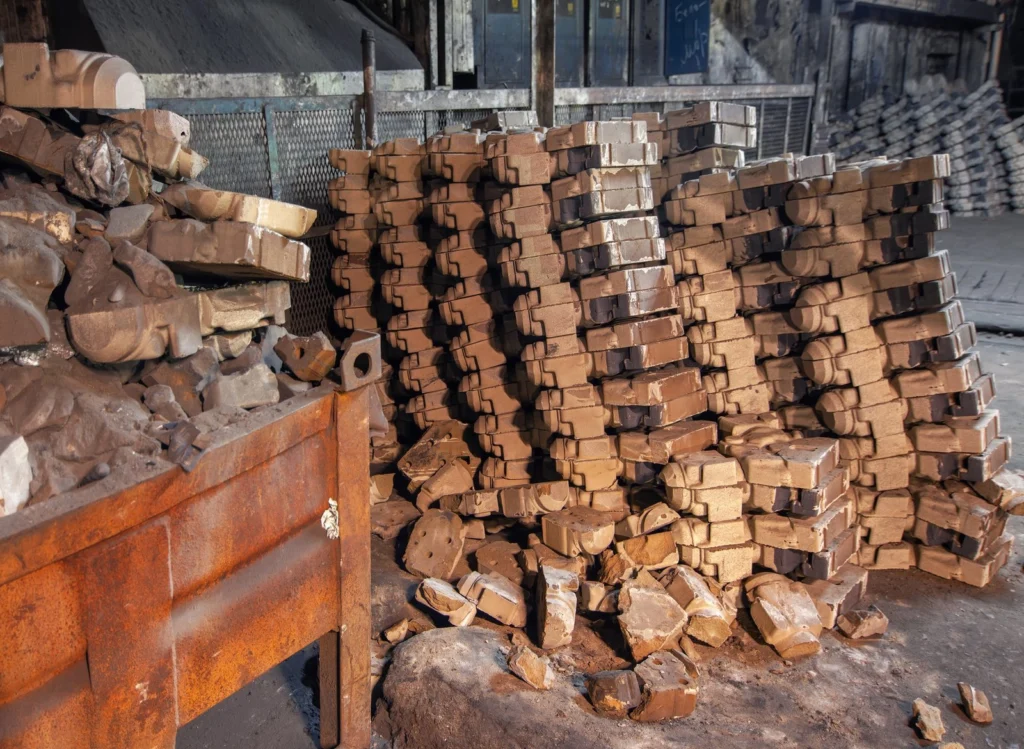
While green sand casting is a widely used and reliable method, like any manufacturing process, it can be prone to certain defects. These defects can affect the quality, accuracy, and strength of the final casting. Understanding the common defects in green sand casting and knowing how to avoid them is crucial to ensuring a successful casting process. Below are the most common defects encountered in green sand casting and practical steps to mitigate or eliminate them.
1. Porosity
Porosity refers to the presence of small holes or voids within the casting, often caused by trapped gas or air. In green sand casting, porosity can be caused by inadequate venting, excessive moisture in the sand, or improper handling of molten metal.
How to Avoid It:
- Ensure Proper Venting: Adequate venting in the mold allows gases to escape as molten metal is poured in. Insufficient venting can lead to gas entrapment, resulting in porosity.
- Control Sand Moisture: Excess moisture in the green sand mixture can create steam or gas when molten metal is poured, leading to porosity. Maintain the correct moisture content for the sand, ensuring it is moist but not overly wet.
- Use Dry Sand: For molds that require high precision, using dry green sand or reducing moisture content in specific areas may help in preventing gas entrapment.
2. Mold Cracking
Mold cracking occurs when the green sand mold fails to withstand the pressure exerted by the molten metal, leading to cracks in the mold. This is typically caused by inadequate moisture in the mold, high metal pouring temperatures, or poor mold compaction.
How to Avoid It:
- Optimize Moisture Content: Ensure the moisture in green sand is properly balanced. Too little moisture will make the mold brittle and prone to cracking, while too much can cause excessive steam generation.
- Improve Mold Compaction: Proper compaction of the sand mixture around the pattern helps create a sturdy mold that can withstand the stress of molten metal.
- Pour at the Correct Temperature: Pour molten metal at the appropriate temperature for the material being used. Pouring metal that is too hot can increase the likelihood of thermal shock, causing mold cracking.
Need Help? We’re Here for You!
3. Surface Roughness
Surface roughness occurs when the casting develops an uneven or textured surface. This can be caused by poor mold preparation, contamination, or improper sand grain size.
How to Avoid It:
- Refine Sand Grain Size: Using fine, uniform silica sand will help produce a smoother surface. Coarse sand tends to leave rougher surfaces and increases the need for post-processing.
- Use Additives to Improve Surface Finish: Adding materials like silica flour or coal dust to the green sand mixture can improve the smoothness of the mold surface, resulting in a cleaner, more refined casting surface.
- Ensure Proper Molding Techniques: Proper molding and handling procedures, such as ensuring the green sand is compacted properly around the pattern, help create smoother surfaces and reduce roughness in the final casting.
4. Cold Shut
A cold shut occurs when two streams of molten metal meet but fail to fuse properly, leaving a weak, visible seam in the casting. This is typically caused by low pouring temperatures, inadequate gating systems, or inconsistent flow of metal into the mold.
How to Avoid It:
- Optimize Gating System: Design the gating system carefully to ensure molten metal flows smoothly into the mold. Proper gating and pouring systems reduce turbulence and ensure even filling.
- Pour at the Right Temperature: Ensuring that the molten metal is at the correct pouring temperature for the casting material prevents it from cooling too quickly and forming a cold shut.
- Increase Pouring Speed: For complex molds or intricate shapes, increasing the pouring speed can ensure a consistent metal flow, reducing the chance of a cold shut.
5. Sand Inclusion
Sand inclusion happens when particles of sand become trapped within the metal casting. This occurs when the mold is damaged, poorly compacted, or has insufficient sand grain adhesion.
How to Avoid It:
- Compact the Mold Properly: Ensure that the green sand mixture is tightly packed around the pattern, especially in intricate areas where sand inclusion is more likely.
- Improve Mold Integrity: Handle the mold carefully during the molding process. If there are cracks or gaps in the mold, molten metal can flow into those areas, causing sand inclusion in the casting.
- Check Sand Quality: Ensure the green sand mixture is clean and free of contaminants or worn-out particles that may contribute to sand inclusion.
Need Help? We’re Here for You!
6. Shrinkage
Shrinkage occurs when the metal cools and contracts, resulting in a reduction in size or gaps in certain areas of the casting. Shrinkage defects are often observed in thick sections of the casting, such as engine blocks or large industrial parts.
How to Avoid It:
- Use Proper Cooling: Adjust the cooling rate of the metal to ensure uniform solidification. Fast cooling can cause uneven shrinkage and defects.
- Incorporate Risers: Risers are additional void spaces placed in the mold to provide extra material as the metal shrinks during cooling. Proper riser placement helps ensure that the metal fills all parts of the mold, avoiding voids caused by shrinkage.
- Optimize Mold Thickness: For large castings, consider making the mold in layers of varying thickness to control the cooling rate and minimize shrinkage defects.
While green sand casting is a highly effective and versatile method, it’s important to be aware of the potential defects that can occur during the process. By understanding the causes of common defects like porosity, mold cracking, surface roughness, and sand inclusion, manufacturers can take proactive measures to improve mold preparation, metal pouring techniques, and mold design. Proper testing, quality control, and attention to detail throughout the process are essential to ensuring successful green sand casting and producing high-quality, defect-free parts.
How to Choose the Right Green Sand Casting Partner?

When looking for a partner to provide customized green sand casting solutions, it’s essential to select a company with deep expertise in metal casting and a proven history of delivering high-quality, precise castings. You need a manufacturer who can meet the unique demands of your project, whether you require aluminum, iron, or other metals for industries like automotive, aerospace, or construction.
One such reliable partner is DZS Metal, a leading manufacturer known for its specialized experience in green sand casting. With cutting-edge technology and a commitment to excellence, DZS Metal offers tailored metal casting solutions that ensure precision, durability, and cost-efficiency. Whether you’re looking for small batch runs or large-scale production, we collaborate with you to provide high-quality castings that meet your exact specifications. Our team is dedicated to delivering the best results on time, every time.
By choosing a partner like DZS Metal, you’re ensuring that your green sand casting needs are met with the highest standards of quality, technical expertise, and reliability.
Conclusion: Why Choose Green Sand Casting?
Green sand casting is a cost-effective and versatile method, ideal for producing high-quality metal parts in industries ranging from automotive to aerospace. Its affordability, speed, and ability to create complex shapes make it a go-to choice for both small and large-scale projects. Additionally, green sand is highly recyclable, offering an environmentally sustainable solution. With its proven reliability and efficiency, green sand casting remains a top choice for manufacturers looking to achieve durable, precise castings at competitive prices.








